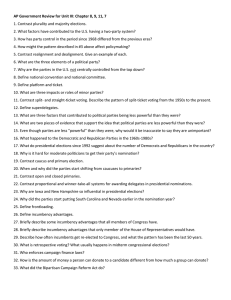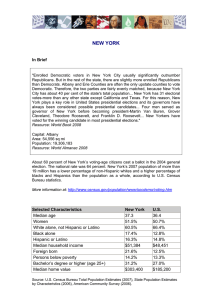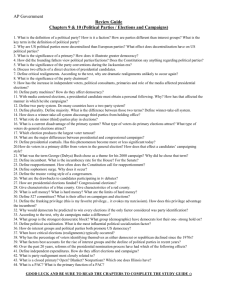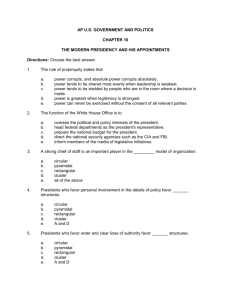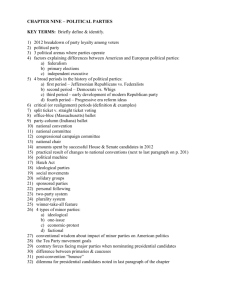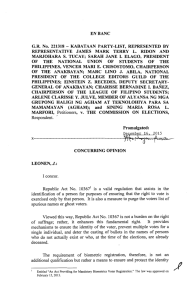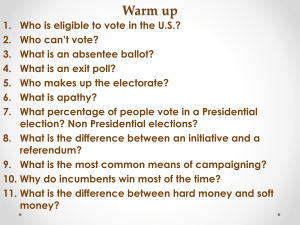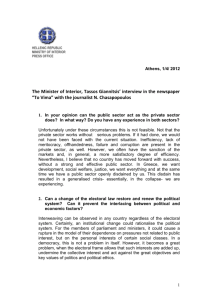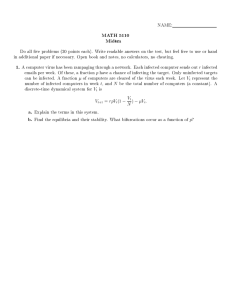Week 4 Tutorial Suppose that 30% of computer owners use a
advertisement
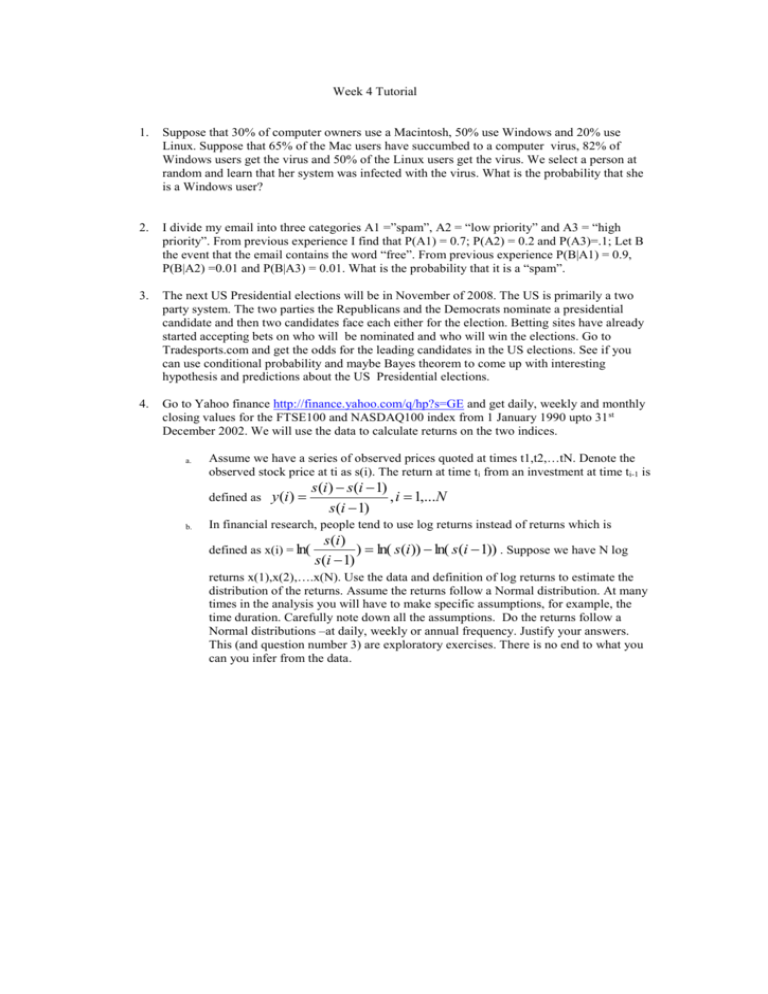
Week 4 Tutorial 1. Suppose that 30% of computer owners use a Macintosh, 50% use Windows and 20% use Linux. Suppose that 65% of the Mac users have succumbed to a computer virus, 82% of Windows users get the virus and 50% of the Linux users get the virus. We select a person at random and learn that her system was infected with the virus. What is the probability that she is a Windows user? 2. I divide my email into three categories A1 =”spam”, A2 = “low priority” and A3 = “high priority”. From previous experience I find that P(A1) = 0.7; P(A2) = 0.2 and P(A3)=.1; Let B the event that the email contains the word “free”. From previous experience P(B|A1) = 0.9, P(B|A2) =0.01 and P(B|A3) = 0.01. What is the probability that it is a “spam”. 3. The next US Presidential elections will be in November of 2008. The US is primarily a two party system. The two parties the Republicans and the Democrats nominate a presidential candidate and then two candidates face each either for the election. Betting sites have already started accepting bets on who will be nominated and who will win the elections. Go to Tradesports.com and get the odds for the leading candidates in the US elections. See if you can use conditional probability and maybe Bayes theorem to come up with interesting hypothesis and predictions about the US Presidential elections. 4. Go to Yahoo finance http://finance.yahoo.com/q/hp?s=GE and get daily, weekly and monthly closing values for the FTSE100 and NASDAQ100 index from 1 January 1990 upto 31 st December 2002. We will use the data to calculate returns on the two indices. a. Assume we have a series of observed prices quoted at times t1,t2,…tN. Denote the observed stock price at ti as s(i). The return at time ti from an investment at time ti-1 is defined as b. y (i ) s(i ) s(i 1) , i 1,...N s(i 1) In financial research, people tend to use log returns instead of returns which is defined as x(i) = ln( s(i) ) ln( s(i )) ln( s(i 1)) . Suppose we have N log s(i 1) returns x(1),x(2),….x(N). Use the data and definition of log returns to estimate the distribution of the returns. Assume the returns follow a Normal distribution. At many times in the analysis you will have to make specific assumptions, for example, the time duration. Carefully note down all the assumptions. Do the returns follow a Normal distributions –at daily, weekly or annual frequency. Justify your answers. This (and question number 3) are exploratory exercises. There is no end to what you can you infer from the data.

